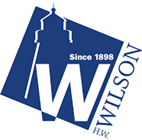Innovative Technology Applications in Science Education: Digital Holography
Keywords:
Digital hologram, Digital holograms in science education, Innovative technologiesAbstract
The use of technology in education gained importance in the 21st century and the use of innovative technologies in education-technology integration came to the agenda. This study examines students’ attitudes, thoughts, suggestions and opinions about digital hologram, which is one of the innovative technologies. The method used in the study was sequential explanatory approach, which is a mixed research method in which quantitative and qualitative methods are used together. The study was carried out with 418 students from six different public secondary schools affiliated to the Provincial Directorate of National Education in the Aegean Region. During the application process of the study, biodiversity, cells and divisions, DNA and genetic code, systems in our body topics, which are included in the science curriculum of the 5th, 6th, 7th and 8th grades were supported with digital holograms in a five-week period. Digital hologram attitude scale (DHAS) and digital hologram reflection form (DHRF) developed by researchers were used to collect data. Independent samples t-test and one-way analysis of variance (ANOVA) were used in the analysis of the data obtained from DHAS, whereas content analysis was used in the analysis of the data obtained from DHRF. As a result of the research, students' attitudes towards digital hologram were found to be positive. In addition, students' attitudes towards digital hologram did not differ significantly according to gender, grade, and school, but they differed according to science course academic achievement score in favor of students with a score between 85-100. Moreover, students evaluated the digital hologram as a useful tool that can contribute to academic learning and can be used in science class in the topics such as solar system and planets, space research, and living creatures. Based on these results, it is recommended to use the digital hologram at all grade levels and for the topics covered by science curriculum.Citation
Turk, H. & Seckin-Kapucu, M. (2021). Innovative technology applications in science educations: Digital holography. Journal of Education in Science, Environment and Health (JESEH), 7(2), 156-170. https://doi.org/10.21891/jeseh.748662
Downloads
Published
2021-02-24
How to Cite
Turk, H., & Seckin-Kapucu, M. (2021). Innovative Technology Applications in Science Education: Digital Holography. Journal of Education in Science, Environment and Health, 7(2), 156–170. Retrieved from https://www.jeseh.net/index.php/jeseh/article/view/346
Issue
Section
Articles







